Omusubi are Japanese rice balls that can be filled with savory additives like tuna, salted salmon, and umeboshi. They are simple to make and even more simple to eat. Aside adding a filling, you can also eat them plain or seasoned with salt, butter and then grilled. There are all kinds of ways to prepare omusubi and in this post, I’ll be sharing three of my favorite!

This is a sponsored post. Kewpie USA was kind enough to send me a box of mayonnaise and some salad dressings and this was one of the dishes that I’ve prepared with their products. If you haven’t heard of Kewpie before, it’s well known for it’s mayonnaise, which is richer and creamier than it’s American counterparts. They also make great salad dressings, one of my favorites being the sesame one. Give them a try if you want to add some Japanese flavor to your food!
Omusubi(おむすび)are delicious hand size rice balls with savory fillings.
Omusubi (おむすび) are one of my favorite Japanese snacks.
If you’re just discovering Japanese food, or have been eating it all your life, you’ll eventually com across omusubi, or onigiri.
Different words that refer to Japanese rice ‘balls’, triangles, and disks.

If you have ever been to a convenience (コンビニ) store or supermarket in Japan, you might have seen these in the food section.
Some of the food court stalls in department stores might sell these too.
Omusubi are basically balls of plain or seasoned rice.
They make for an easy snack on the go and or part of your lunch or dinner.
Sometimes they are stuffed with things like umeboshi (picked plum), salted salmon, tuna with mayo, mentaiko (salted cod roe), beef, and many other fillings.
My favorites are umeboshi, tuna and salmon.
Want to learn a few tricks to help you make these better and with less mess?
Read on for some of my tips below!

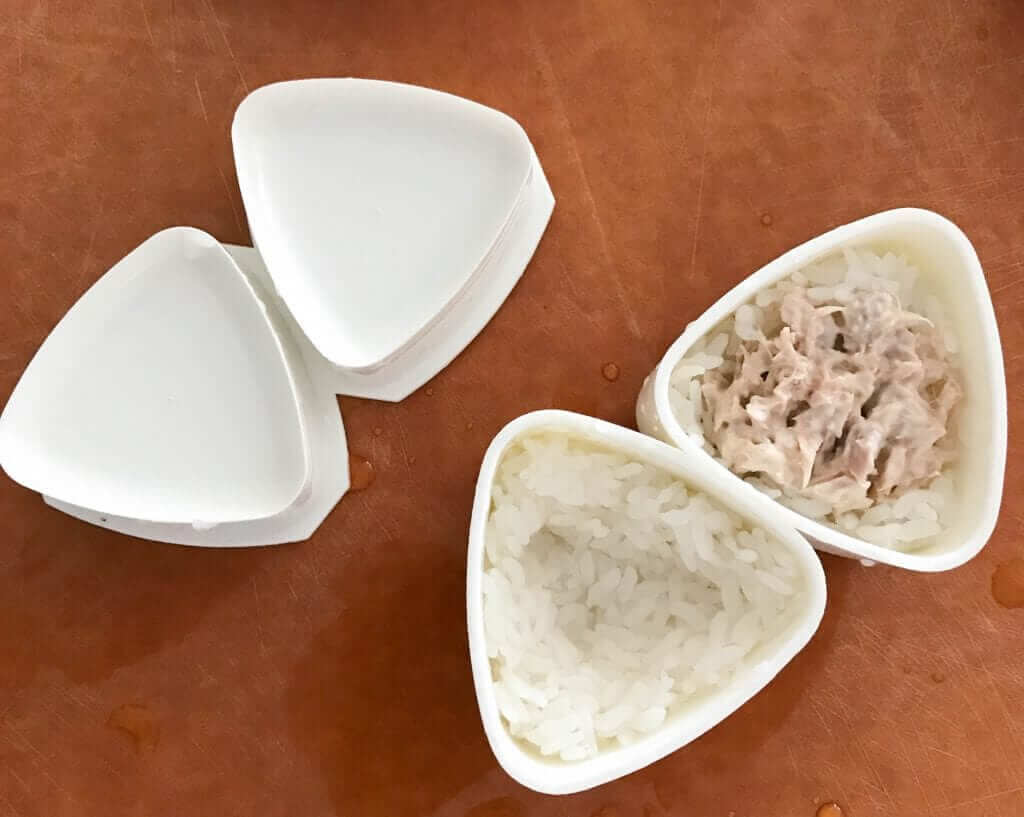
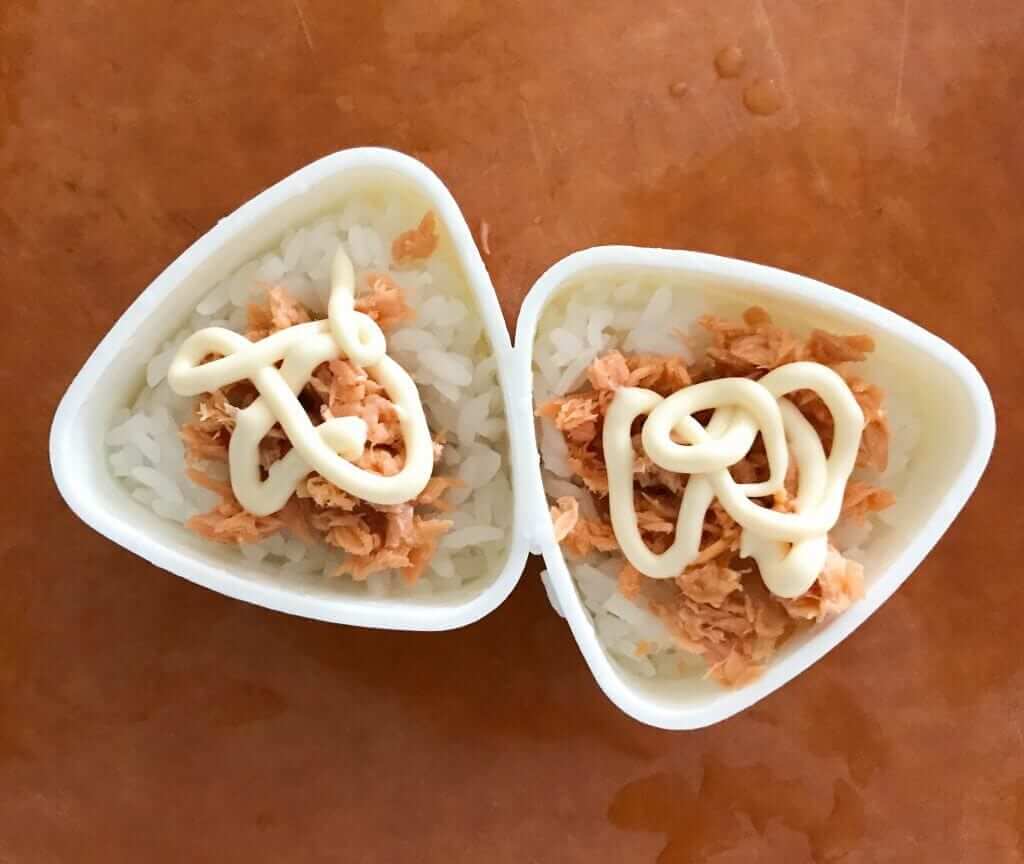
Making omusubi is as simple as making cooked rice!
Not really, though, since your rice machine doesn’t pop out omusbi, now does it.
Maybe one day it will!
But really, making omusubi is extremely easy.
Cooked rice
Once you have cooked rice, you’ll want to remove it from your rice machine and or pot and allow it to cool.
Otherwise you’ll burn yourself. Yes, you will. so let it cool first! 🙂
Shape rice
After the rice cools, all you need to do is shape the rice and add a filling in between.
The shaping is probably the hardest part.
Filling and Seasoning
Sometimes you don’t even need to add a filling.
If you have a Japanese market or search on Amazon you can find omusubi seasoning and even use furikake, which might be easier to find.
With the seasonings, you just add to your rice (some while it cooks, some after) and then shape into a ball.
It’s a very easy thing to put together!
Depending on the size or how many you make, this could also easily become a full meal.
If you don’t have the triangle rice mold, you can also just use plastic wrap and shape the rice with your hands.
In between each batch, always wet the wrap or mold with water so the rice doesn’t stick. Your hands should be wet too!
^^^^ this is key – wet your hands so the rice doesn’t stick!!

Some other tips for making omusubi-
- use water for your mold, plastic wrap and hands!! Always!!
- always use fresh rice, try to eat the omusubi within the same day, as you may know rice that gets refrigerated can develop a harder texture
- add a piece of konbu (kelp) to your rice for additional flavor or umami ( which konbu is full of!! ); and no it’s not going to make everything taste like seaweed!!
- if you wrap with nori (dried seaweed), toast the seaweed over an open flame for a few seconds on each side, this really enhances the flavor 🙂
- to preserve the crunchy texture of the nori, don’t wrap the omusubi until just before you eat it. it makes a big difference!! (have you noticed in Japan, they keep a plastic divider between the rice and the nori?)

Filling Variations
If you’re a fan of omusubi, you probably already know that the filling options are endless!
Classic Fillings
Some classic fillings include tuna, salted salmon, and umeboshi.
Tuna is a rich and meaty option that pairs well with other salty or tangy flavors, while salted salmon provides a deliciously salty punch.
Umeboshi, or pickled plum, is a traditional Japanese ingredient that adds a sour and tangy taste to your omusubi.
These three different fillings create a flavorful and satisfying omusubi that is sure to please.
grilled teriyaki chicken, avocado, and cucumber
But there are so many other delicious fillings you can try as well!
For example, you might try filling your omusubi with grilled teriyaki chicken, avocado, and cucumber.
This combination provides a tasty blend of sweet and savory flavors, with the creamy avocado and crunchy cucumber adding texture and freshness.
Omusubi 3 ways
If you’re feeling adventurous, check out this recipe for Omusubi 3 Ways.
This recipe uses traditional Japanese ingredients in new and creative ways, with fillings like umeboshi and tsukudani (a kind of simmered seaweed) that add unique and flavorful twists to your omusubi.
Conclusion
Whatever filling you choose, there’s no doubt that omusubi is a delicious and versatile snack that can be enjoyed in many different ways!
Ever made omusubi before? If so, what do you like to put in them? Let me know with a comment below!
Want to try other Japanese recipes? Click here!
You can also purchase 5 Japanese meals eCookbook to make you discover the rich Japanese cuisine.
Or if you want to eat healthier, check these tofu recipes here.
Just in case you missed them previously, here is a link to my collection of Japanese recipes!
PrintOmusubi (Japanese rice balls) with tuna, salted salmon, and umeboshi
Omusubi are Japanese rice balls that can be filled with savory additives like tuna, salted salmon, and umeboshi. They are simple to make and even more simple to eat. Aside adding a filling, you can also eat them plain or seasoned with salt, butter and then grilled. There are all kinds of ways to prepare omusubi and in this post, I’ll be sharing three of my favorite!
- Prep Time: 10 minutes
- Total Time: 10 minutes
- Yield: 8 people 1x
- Category: Main Dish
- Cuisine: Japanese
Ingredients
- 2 cups japanese rice (dry)
- 6 ounces canned tuna (one can packed in water, drained)
- 3–4 tablespoons kewpie mayonnaise
- 1 sheet seaweed (cut into roughly 1 inch x 4 inch pieces)
- salted salmon ((optional))
- umeboshi ((optional))
- shiso furikake seasoning ((optional))
Instructions
- Cook 2 cups of rice in a rice cooker or on the stove according to package directions.
- Once complete, turn off rice cooker and allow to cool.
- While the rice is cooking prepare tuna (and other ingredients if using).
- Fill a small bowl with water and wet your hands. Using an omusubi mould or plastic wrap, wet the surface with water. Measure about 1/4 cup of rice and shape into a half ball or half triangle.
- Add in filling and then add another 1/4 cup of rice over the top of the filling. Press down firmly and repeat for each ball of rice.
- Rewet your hands and the surface of the mould in between batches.
- Once complete, wrap with a small piece of nori (dried seaweed) and eat!


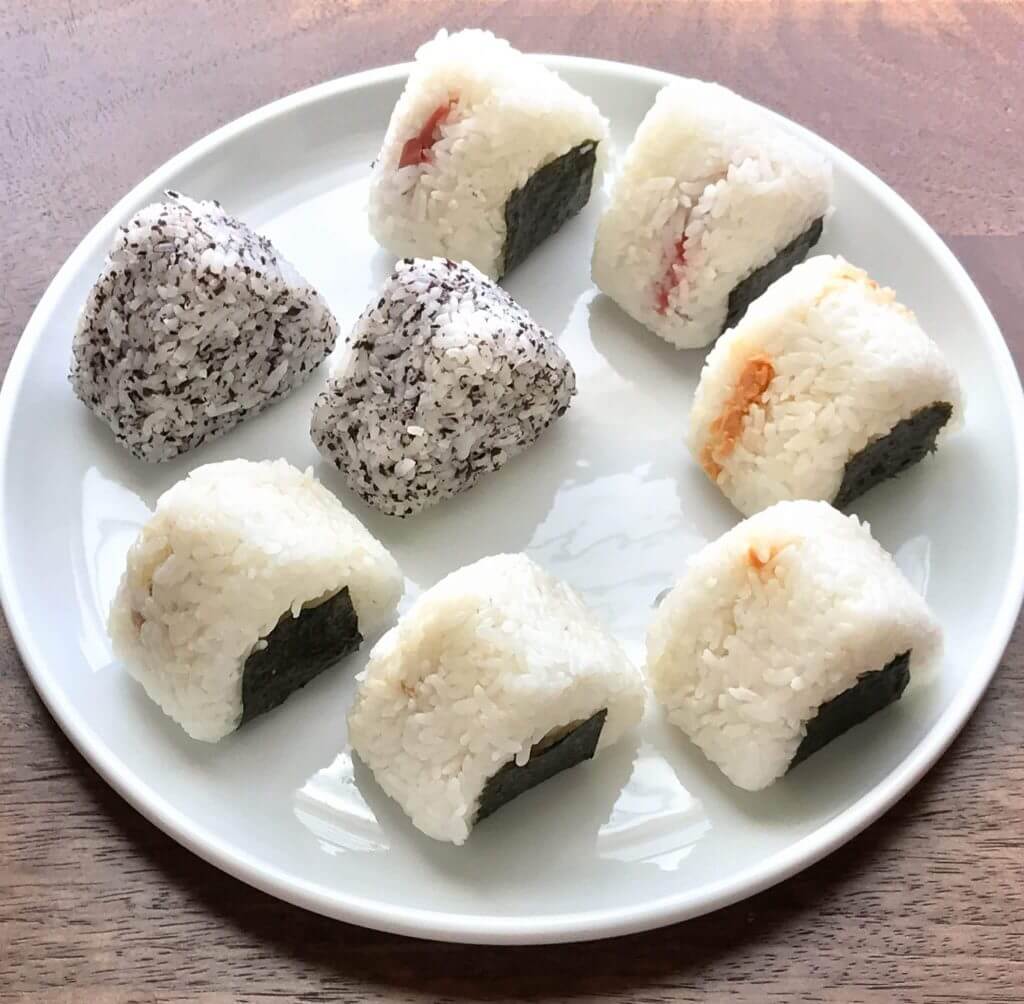




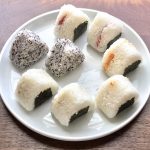


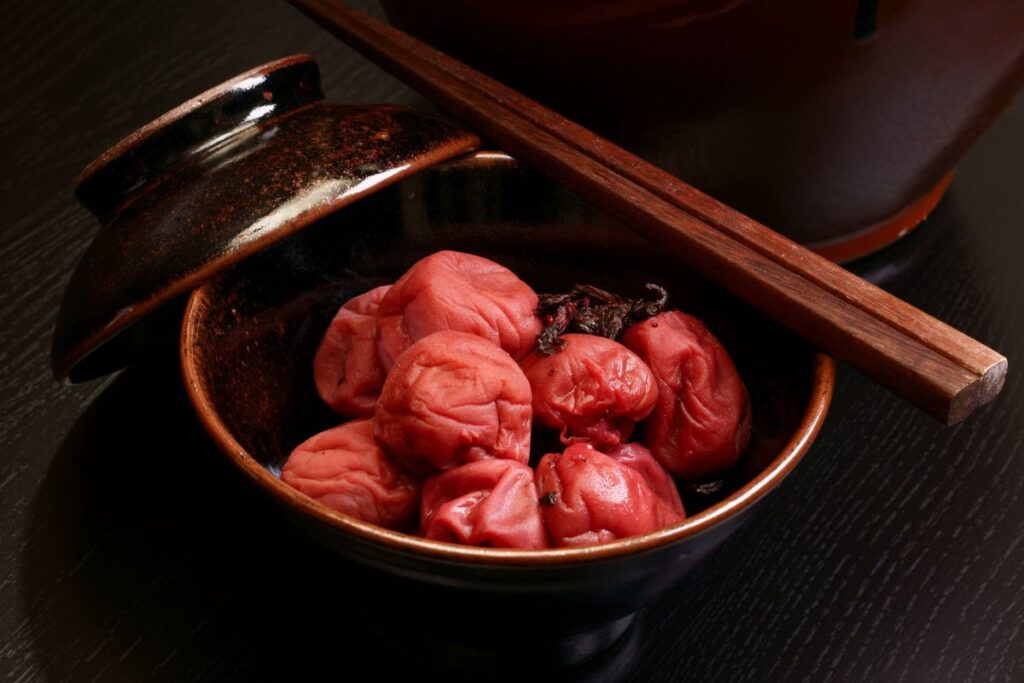


We love these!!! My favourite is the umeboshi! My older daughter likes mixing furakake through the rice and making them into balls.
Yours look so beautiful and neat – I’m afraid ours are not so attractive!
thank you Ju-Lyn, it’s not me, its the rice mold! if you can find one, it definitely helps with the shape 🙂
Ah so! Yes, I think holds is the way to go!
Happy 3 yr blogging anniversary!
Looks pretty easy. I like the triangular mold. I’m sure it’s tasty too.
thank you, there are also many other shapes and sizes. but the triangle is probably the most common! 🙂
Love omusubi, with all kinds of fillings, and yours look yummy!
thank you 😀
My pleasure 🙂
These look so very tasty! Love the different fillings you have here. 🙂
thank you!
Cute and delicious! 🙂
thanks jess~!
Gorgeous assortment. Makes my tuna version look a little plain.
One of these days, I’m going to buy and try the umeboshi. 🙂
thanks for the note! that beet pasta looks good. was it a keeper? if you do get umeboshi, make sure to get the salty one!!
The beet pasta was definitely a keeper though I don’t think it gave the pasta a particularly unique flavour. It was fun to make though and it certainly looked good. My first attempt was pretty pink as I only added a couple of tbsp of the puree. With 1/4 cup or more, it was pretty dramatic. And, the longer you cook it, the paler it gets as the colour leaches out into the pasta water so roll it thin and cook it fresh. I’ve frozen and stored the pasta for more than a month before thawing it and rolling out. I’ve also made ravioli which I froze, and then boiled from frozen. It all worked out well.
I didn’t realize there was more than one kind of umeboshi. Thank you. 🙂
thank you for the tips! ive never made anything aside from plain fresh pasta. looks like ill need to try experimenting now 🙂
I’ve only made spinach, beet (root) and cocoa/chocolate pastas. I found that the add ins give colour but taste wise, it’s just like eating regular pasta. So my dessert version of chocolate pasta as ravioli and fettuccine wasn’t as ‘desserty’ as I’d hoped. 🙁
I had intended to do a red (tomato paste and paprika), orange (carrot), and yellow (turmeric) versions at some point.
Forgot about your comment about the salty umeboshi and came home with a container of Hachimitsu Umeboshi … What can I do with them?? Can I still use them for onigiri?? What else??? Helpful suggestions greatly appreciated. 🙂